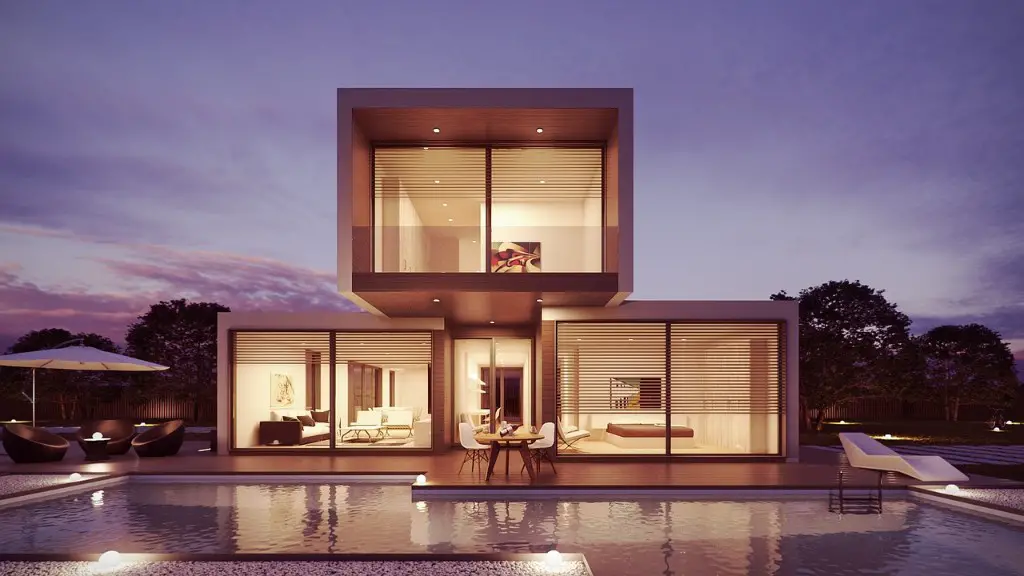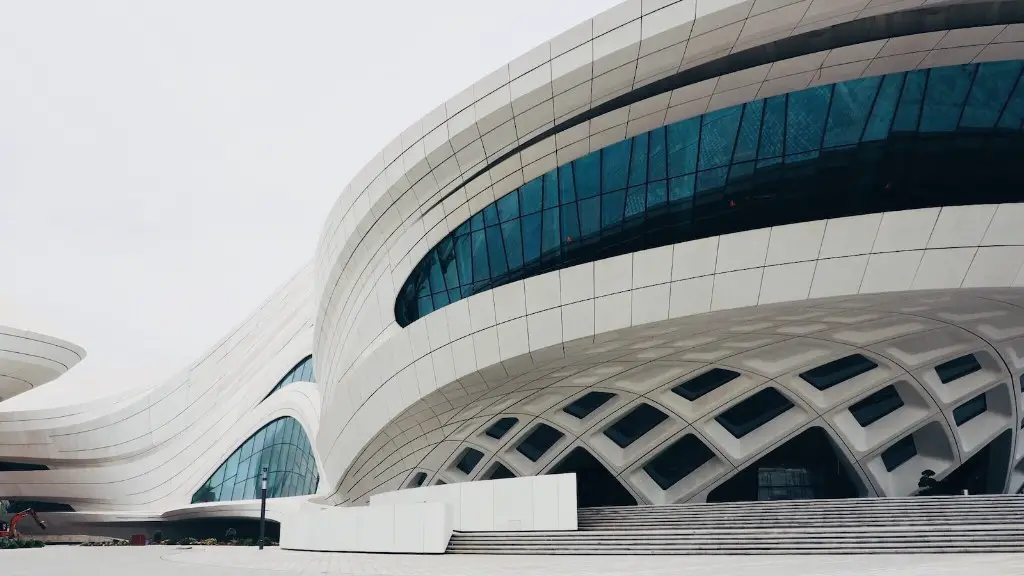Do You Need Geography For Architecture?
Architecture is so much more than just the design of buildings and structures. Architects are tasked with the critical responsibility of designing and constructing safe, stable, and visually pleasing buildings that meet the needs of their clients. They are also aware of certain aspects of geography, such as topography, and how this can affect the design and construction of buildings.
The field of geography studies the physical and human aspects of our environment, such as landforms, climate, and human settlements. For architects, understanding the basics of geography is essential in order to create designs that both match the environment, and meet the needs of the people in it. This includes understanding the physical features of the land, such as the soil type and conditions, as well as the climate. It also involves understanding the economic, political, and social concerns of the area in which they plan to construct their buildings.
The idea of geography in architecture is seen in the use of adaption to the environment. Architects must think how their buildings will affect the environment and how this may need to change over time, because of changes in the climate, weather conditions, and population size. They must also think about how their building can benefit the environment, such as by using sustainable materials and incorporating features such as green rooftops that help reduce energy consumption and promote solar energy sources.
Geographic knowledge also helps architects to think beyond the walls of the building they are designing, and consider how the context of the environment shapes their design. For example, an architect should consider the history, culture, and needs of the people living in the area, in order to create a building that not only serves its purpose, but also fits in with the local community. They should also consider how their design will affect the surrounding area, for example, traffic patterns, or the view of the building from neighboring properties.
Geography is also vital for an understanding of the building techniques used in different regions. This includes building techniques that are particularly suited to certain climates or locations and how these building techniques can be adapted over time to suit a changing climate. This can help ensure that the building remains both safe and effective over time, while also taking into account the changing needs and wants of the people living in the area.
What Skills are Required for Architects to Possess?
The most important skills for an architect to possess are those related to design. Architects must have an eye for detail, be able to visualize and create designs that are both aesthetically pleasing and practical. They should have an understanding of the various materials available, and what kind of structures work best for different environments. This also involves a knowledge of engineering, as architects must also understand how their designs can be constructed and implemented in a safe and effective way.
Architects must also have an understanding of the local building codes and ordinances. They must be aware of the safety and accessibility regulations that are in place, in order to ensure that their buildings meet the necessary standards. This requires an understanding of the local architecture, as well as an understanding of the policies and regulations that are in place in the area.
Finally, architects also need to possess good communication and people skills. They must be able to work with a range of people, from clients to construction workers and city officials, in order to ensure that the project runs smoothly and efficiently. They need to be able to present their ideas in a clear and concise manner, and be able to effectively negotiate with these people in order to get the best results.
Advantage of Having a Background in Geography
Having a background in geography can help architects to better understand and appreciate the environment they are designing in. This can help them to tailor their designs to the specific environment, instead of simply creating ‘one size fits all’ designs. They can also consider the culture, history, and needs of the people who will be using the buildings and make sure their designs reflect this. This can help to ensure that their buildings are appreciated and well-used.
Architects with a background in geography can also be better able to anticipate and address the challenges of climate change. With an ever-increasing global population, an understanding of the climate, weather, and natural environment is essential for architects to ensure the sustainability of the structures they design. By understanding the geography, it can be easier to make design decisions that reduce the impact of future climate challenges.
Finally, having a background in geography can also help architects to better understand the changing needs of their clients and the surrounding area. As populations grow and economies improve, architects must take into account the facilities and services that will be needed in the future. An understanding of geography can help them to anticipate these needs and factor them into the design of their buildings.
Conclusion:
In conclusion, understanding the basics of geography can be extremely beneficial to architects. By taking into account the physical and social environment, they are able to create designs that are both aesthetically pleasing and practical. They are also able to understand the local building codes and ordinances, as well as anticipate the needs of their clients. Finally, having a background in geography can also help them to adapt their designs to changing climates and populations, ensuring that their buildings remain safe and effective for years to come.
Assessing Landforms
Geography can be used to assess landforms, or the physical features of a particular area or landscape. Architects must understand the land on which they are building, as this can affect the structural integrity of a building, as well as its location and how much sunlight it receives. For example, they might consider the kind of soil in the area and how it will affect the stability of the building.
Understanding the specific features of the terrain is also important for assessing risks and planning for any potential natural disasters. For example, in areas with regular flooding, architects must be aware of where the flood plains and rivers are in order to avoid any potential disasters. By understanding the land and the specific terrain, architects can ensure their building is safe and compliant with any regulations that may be in place.
Architects can also use geography to understand the local environment, such as climate and vegetation. This can allow them to better understand how their building will fit into the landscape, as well as any potential risks and benefits that may be associated with it. For example, in a desert climate, an architect will likely consider the use of materials that help keep the interior of the building cool, as well as landscaping features that can cope with the extreme weather.
Urban Planning and Design
Urban planning is the process of designing and developing cities, towns, and villages. Architects are often involved in this process, as they are responsible for designing the infrastructure, buildings, and other elements that make up a city. To ensure that their designs are suitable for the area, they must first understand the geography of the area, such as the population and demographic shifts, as well as the infrastructure, resources, and services available.
Geography can also be used to understand the social and economic needs of areas. For example, an architect may consider how in densely urbanized neighborhoods, there may be a need for more parks or green spaces, or if there is a need for more affordable housing to meet the needs of the local population. Understanding the geography of an area can help to create designs that are both practical and aesthetically pleasing.
Geography can also be used to understand the local infrastructure and services, such as public transportation and sanitation systems. Having an understanding of these will help architects to create designs that can effectively integrate with existing systems, while also taking into account the environmental and social effects of their designs.
Disadvantages of Poor Geographical Knowledge
One of the major disadvantages of a lack of geographical knowledge is the potential for unintentional damage to the environment. Without understanding the geography of an area, it can be easy for architects to overlook potential risks, such as flooding or seismic activity, or to overlook the potential for damage to the local flora and fauna. This can lead to an increased risk of accidents or even natural disasters if the building is not built correctly.
A lack of geographical knowledge can also lead to inefficient design. For example, without understanding the terrain, an architect may not consider the best construction methods to use in a particular area, leading to increased costs and delays. It can also lead to an inefficient use of materials, as they may not take into account the climate and weather conditions of the area.
Finally, a lack of knowledge of geography can lead to poor communication between architects and their clients. If the architect does not understand the local area and the needs of the people, it can be difficult for them to create a design that meets the needs of the client. This can be especially difficult if the client does not understand the potential risks involved in a particular design or if the project requires collaboration with other stakeholders.





